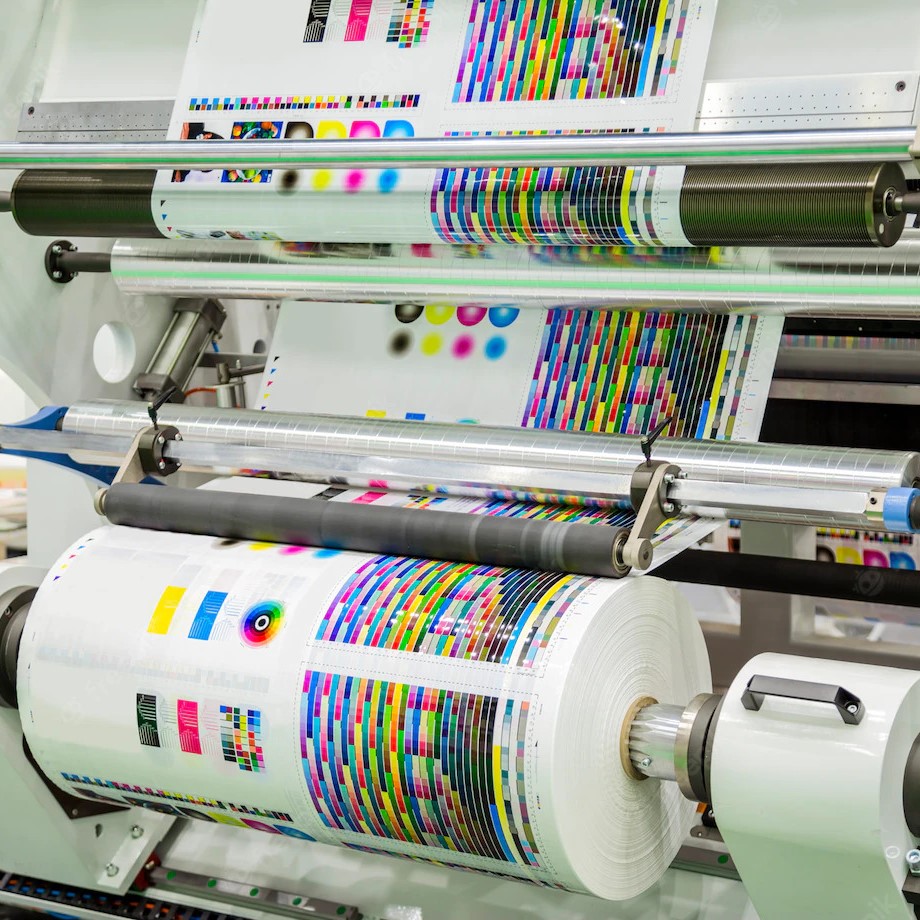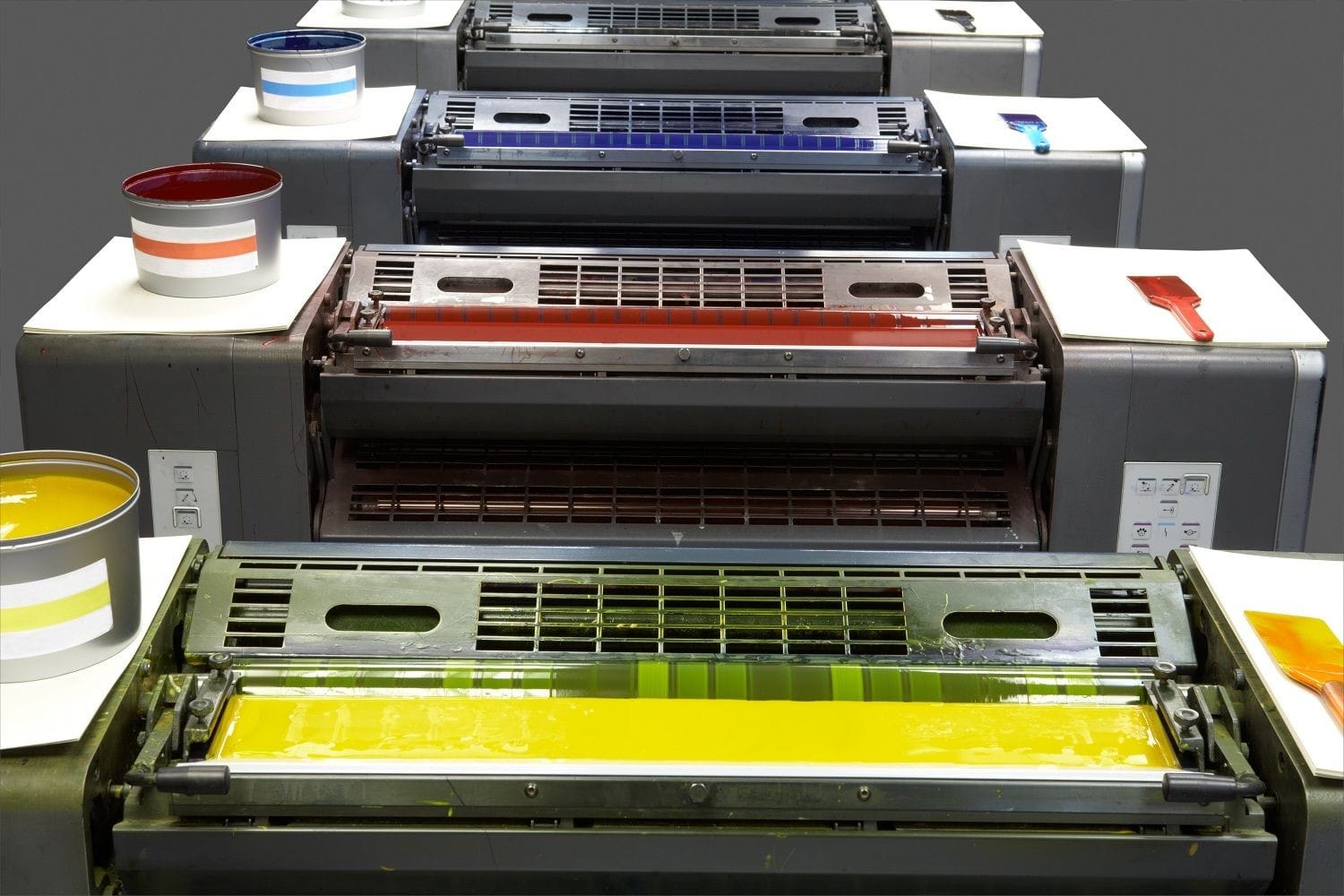Understanding How litho printing Works and Why It Matters
The Vital Guide to Understanding Litho Printing and Its Applications
Litho printing stands as a substantial approach in the printing industry, rooted in the principles of oil and water repulsion. This strategy not only supplies top notch images but likewise satisfies different commercial requirements. Its applications range from marketing products to packaging, showcasing its flexibility. As the sector adapts to brand-new innovations, the advancement of litho printing questions regarding its future and significance in a digital landscape. What lies in advance for this withstanding approach?

What Is Litho Printing?
Litho printing, an extensively used printing technique, counts on the concept of oil and water repulsion. This approach uses a level printing surface area, commonly a metal plate, which is dealt with to assure that the picture areas are responsive to oil-based inks while the non-image locations repel them. The procedure begins with the development of an image on home plate, usually via illustration or photographic methods. When the photo is prepared, the plate is wetted with water, followed by the application of ink. The ink adheres only to the image locations, enabling exact recreation of graphics and message. Litho printing is favored for its capability to create premium prints with fine information and vivid shades. It is typically utilized in business applications, consisting of newspapers, publications, and packaging, showcasing its adaptability and efficiency in fulfilling the demands of modern printing.
The Background of Lithography
Lithography is a contemporary printing staple, its beginnings map back to the late 18th century when German dramatist Alois Senefelder created the strategy in 1796. Created as an approach for recreating texts and images, lithography utilized a level stone surface to develop prints with a chemical process. Senefelder's technology enabled better versatility and artistic expression compared to previous printing methods.By the 19th century, lithography obtained widespread acceptance, becoming a prominent choice amongst artists and publishers. It made it possible for the automation of images, maps, and posters, significantly affecting the printing industry. The method better developed with the intro of lithographic presses, boosting efficiency and quality.As the industrial transformation proceeded, lithography adapted to fulfill the demands of industrial printing, leading the way for modern-day applications. Today, it remains a necessary strategy in various industries, consisting of posting, product packaging, and fine art reproduction.
Exactly How Litho Printing Works
A crucial attribute of litho printing is its dependence on the concept of oil and water repulsion - litho printing. In this procedure, photos are transferred from a flat surface, commonly a steel or polymer plate, to paper. Home plate is dealt with so that the areas intended for printing bring in ink, while the non-image locations repel it due to their affinity for water. The printing begins by wetting home plate with water, which adheres to the non-image areas. Subsequently, an oil-based ink is used, sticking only to the designated image areas.When the plate enters call with the substrate, the ink is moved, creating a print. The litho printing process can creating top quality images with great information. It is typically used for mass manufacturing because of its efficiency and consistency, making it a recommended approach for commercial printing applications
Advantages of Litho Printing
One notable advantage of litho printing is its capability to produce high-quality photos constantly, making it a perfect selection for industrial projects. This printing approach utilizes a level printing plate, making certain even ink circulation and sharp details. Litho printing is also renowned for its shade accuracy, making it possible for lively and true-to-life reproductions, which is crucial for branding materials.Moreover, it supports a wide array of substratums, including paper, cardboard, and even particular plastics, enhancing its convenience. The process is cost-efficient for large runs, as economic situations of scale minimize per-unit costs. In addition, litho printing has a fast turnaround time, enabling reliable production schedules.Its toughness also indicates that published products withstand fading, making certain that the end product keeps its aesthetic appeal gradually. On the whole, these advantages make litho printing a recommended selection across different sectors, contributing to its long-lasting appeal.
Applications of Litho Printing in Business
As companies significantly look for reliable and premium printing remedies, litho printing emerges as a principal in different applications. This strategy is particularly favored for creating advertising products such as pamphlets, flyers, and directories, many thanks to its capacity to deliver dynamic shades and sharp pictures. In enhancement, litho printing is regularly used for product packaging solutions, enabling business to produce eye-catching labels and boxes that improve item appeal.In the market of business identification, litho printing is critical in creating professional stationery, organization cards, and advertising product, which assist strengthen brand recognition. Furthermore, it is widely used in the posting industry for printed materials such as publications and publications, where constant high quality is critical. In general, litho printing's flexibility and performance make it an important tool for companies aiming to connect efficiently and establish a solid market existence.
Artistic Uses of Litho Printing
Litho printing works as a flexible tool in the domain of printmaking, offering musicians a distinct method to express their imagination. This strategy permits a vast variety of artistic applications, from typical prints to contemporary interpretations. By exploring the subtleties of litho printing, artists can harness its distinctive high qualities to boost their job.

Printmaking Techniques Review
The creativity of printmaking includes a varied range of strategies, with litho printing attracting attention for its unique method to photo development. This method relies upon the concept of oil and water repulsion, permitting musicians to attract directly onto a sedimentary rock or steel plate with a greasy medium. As soon as prepared, the plate is moistened and tattooed, moving the image onto paper with pressure. Litho printing is commemorated for its ability to create great information and abundant tonal variants, making it a favored option among artists. In addition, the procedure more is versatile, fitting both typical techniques and modern adaptations. This versatility enables litho printing to bridge numerous creative styles, improving the printmaking landscape with its distinctive qualities and capacities.
Unique Artistic Applications
Checking out the one-of-a-kind creative applications of litho printing exposes its exceptional convenience in various innovative areas. Musicians make use of litho printing to develop intricate layouts and textures, enabling for expressive and in-depth works. The procedure helps with the recreation of brilliant colors, making it ideal for pictures and art prints. Numerous contemporary artists embrace lithography for its capacity to integrate typical strategies with modern-day ideas, leading to ingenious art work. Furthermore, litho printing is typically employed in the production of minimal edition prints, boosting their value and allure. The responsive high quality of litho prints includes a distinct measurement, drawing in collection agencies and art enthusiasts alike. In general, litho printing continues to be a considerable tool for creative expression, connecting timeless methods with modern creativity.
The Future of Litho Printing in a Digital World
As the printing market progresses, litho printing faces the challenge of incorporating electronic technologies to continue to be relevant. Techniques focused on digital combination, together with fads in sustainability and innovation, will certainly form its future - litho printing. Comprehending these dynamics is essential for market stakeholders looking to adjust to a rapidly transforming landscape
Digital Integration Approaches
A growing variety of litho printing companies are accepting digital combination methods to remain competitive in a progressively electronic landscape. By incorporating electronic process, these companies can enhance processes and boost effectiveness. This combination allows for real-time information monitoring and improved interaction in between departments, minimizing turn-around times noticeably. In addition, digital tools make it possible for better personalization and customization of published materials, dealing with details customer needs. Firms are also embracing crossbreed printing remedies that incorporate typical litho techniques with digital technologies, offering adaptability in manufacturing. Additionally, leveraging information analytics aids in recognizing market fads and client choices, allowing companies to make educated choices. On the whole, electronic assimilation is becoming necessary for litho printing business aiming to innovate and react to progressing market demands.
Sustainability and Innovation Patterns

Frequently Asked Concerns
What Products Are Commonly Made Use Of in Litho Printing?
The materials generally used in litho printing consist of light weight aluminum plates, ink, water, and paper. Each component plays a necessary role in the printing process, making certain premium photo reproduction and efficient transfer of ink onto the substratum.
How Does Litho Printing Contrast to Digital Printing?
Litho printing offers superior shade consistency and high quality for big runs, while electronic printing excels in short runs and customization. Each method has unique benefits, satisfying various requirements news based upon manufacturing scale and cost-efficiency.
What Is the Normal Turn-around Time for Litho Printing Projects?
The regular turn-around time for litho printing projects varies, typically varying from a couple of days to several weeks. Elements influencing this duration consist of job intricacy, amount, and called for ending up procedures, impacting overall manufacturing schedules.
Can Litho Printing Accommodate Personalized Sizes and Formats?
Litho printing can indeed accommodate customized sizes and styles, permitting versatility in style. This versatility allows clients to achieve distinct print results tailored to their certain demands, improving the general performance of their projects.
What Are the Ecological Influences of Litho Printing?
The ecological effects of litho printing include resource consumption, chemical usage, and waste generation. Nonetheless, innovations in sustainable practices and eco-friendly products are progressively decreasing these negative results, advertising a much more environmentally responsible strategy to printing.